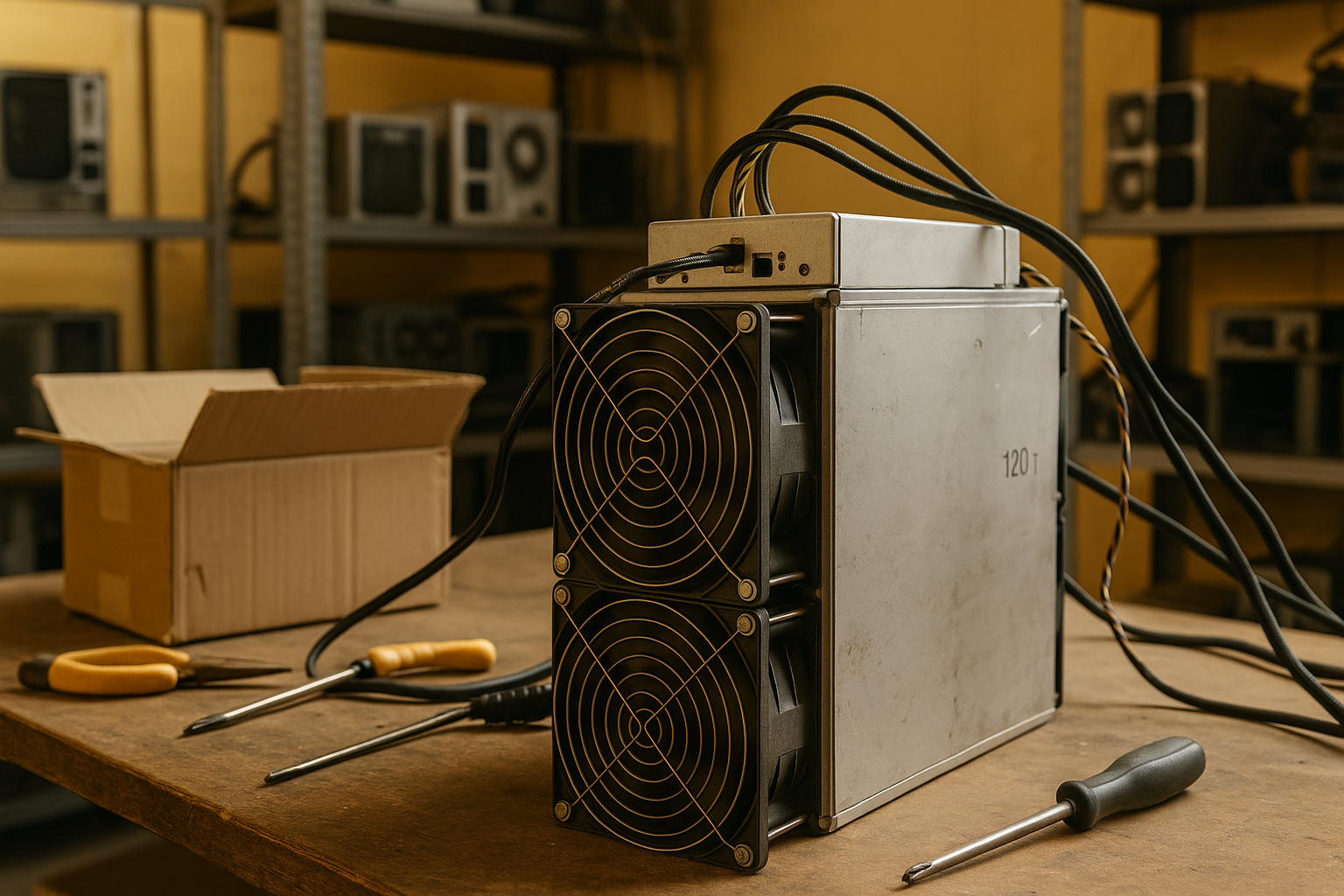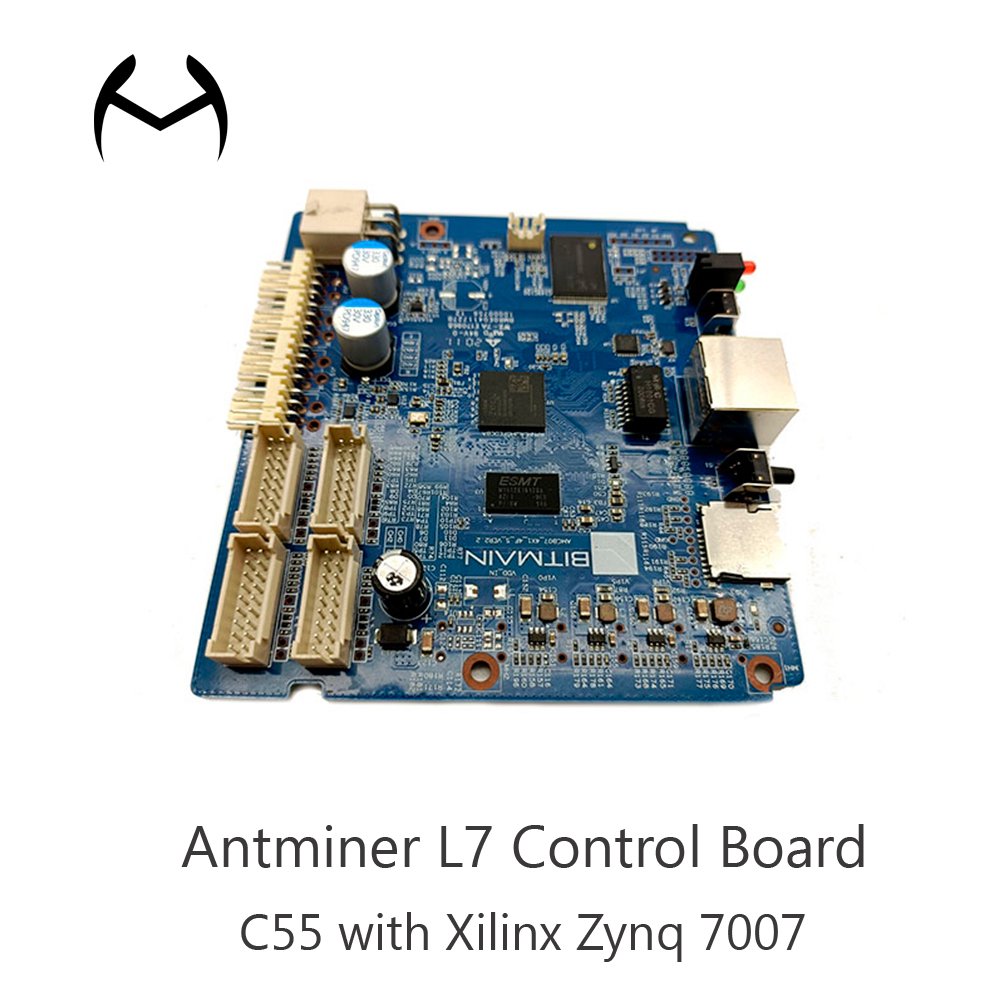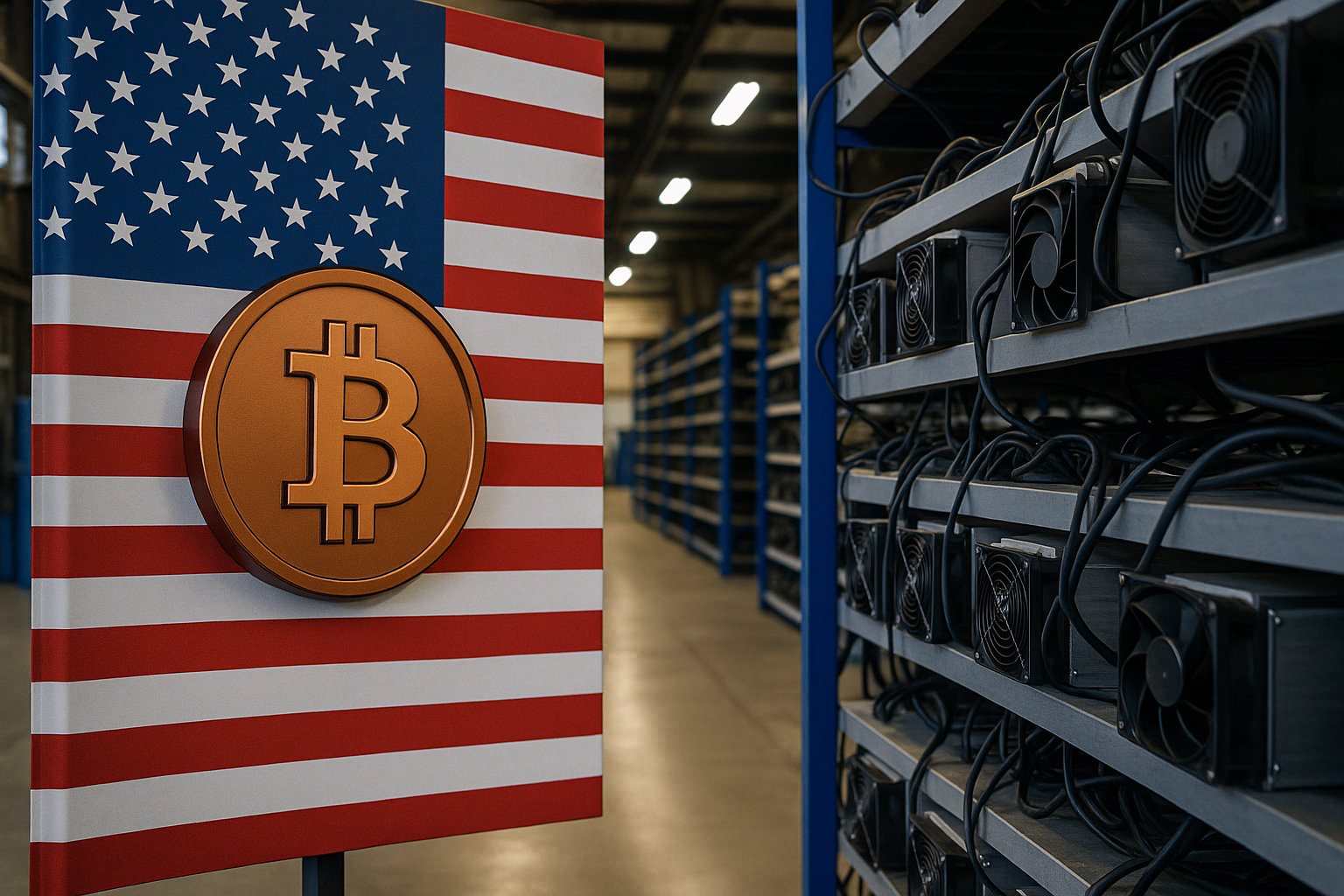What are the most common signs of a fake Antminer?

Even seasoned miners can be fooled by a well-crafted counterfeit. Common red flags include mismatched model details or suspicious firmware behavior. For example, Bitmain has reported an “item swapping” scam where buyers expecting a new Antminer D9 actually received an older S9 model instead. They emphasize checking physical differences (like case size or label placement) between models. Other signs are unusually low prices, missing or unverifiable serial numbers, and sellers reluctant to share clear photos. Scammers often steal stock images or photoshop their listings, so always ask for real-life pictures of the exact unit. In short, if the rig’s specs, stickers or performance don’t align with the advertised model, walk away.
A convincing fake may have re-glued labels and polished old hashboards, as one scam involved swapping an Antminer L7 (8800M ) into an L7 (9500M) case. Other giveaways: firmware that shows extra “ghost” chips or inflated hashrate, and excessive dust/dirt in a “new” unit. Scammers sometimes pretend an old miner is new by cleaning it, but dust remains in hard-to-reach places. In short, scrutinize every detail: if specs and appearance don’t truly match a genuine unit, it’s probably fake or tampered.
| Feature | Genuine Antminer | Fake/Counterfeit |
|---|---|---|
| Serial & Warranty | Verifies on manufacturer site; has active warranty | Invalid or unverifiable serial; no warranty |
| Price | In line with market rates | Too good to be true – suspiciously low |
| Physical Appearance | Proper model-specific case and label | Misaligned or re-glued labels; unusual weight |
| Photos/Listing | Clear, seller’s own photos; detailed specs | Stock or stolen images; scant info |
| Firmware/Stats | Authentic firmware; hashboards reflect real output | Modified firmware (inflated “hash”); excluded dead chips |
Why do scammers modify firmware or chips in used ASICs?

In short, to hide defects and boost sales. A common trick is custom firmware that lies about performance. One report notes scammers exclude burnt-out chips from the circuit and overclock the rest, so the miner appears to run normally. This masks problems – the user interface looks genuine, but the reported statistics don’t match reality. In practice, a flash firmware might show a full chip count and healthy hashrate even though several chips are dead. Sellers want buyers to think the rig is nearly new, so they inflate numbers or remove error messages. Over time this hastens failure: with extra heat and strain, the remaining chips burn out faster.
So why do it? Profit. By tweaking firmware, a scammer can sell an old, underperforming miner at a price closer to a new one. Without modification, buyers would see low hash rates or instability. Instead, a victim might pay top-dollar for hardware already on its last legs. Essentially, the scammer is spoofing the chip count and hash rate – just as one analysis describes, the fake firmware shows user stats (“Jacks” and “Hiks”) while the real performance is much lower. Solution: Always verify performance independently (see next section) and be wary if the miner’s efficiency claims seem unusually high for a used unit.
| Aspect | Details |
|---|---|
| Purpose of Scam | To hide hardware defects and boost sales value of worn-out miners. |
| Common Technique | Installing custom/flash firmware that fakes performance stats. |
| How It Works | – Burnt-out chips are excluded from circuit. – Remaining chips are overclocked. – Interface shows full chip count and healthy hashrate. |
| Why It’s Deceptive | – UI appears normal, masking internal failures. – Statistics (hashrate, chip count) don’t match reality. |
| Real-World Example | One report noted scammers spoofed chip stats using labels like “Jacks” and “Hiks” – real performance was far lower. |
| Seller Motivation | – Maximize profit by making the miner look “nearly new”. – Avoid selling at a low price due to real issues. |
| Impact on Buyer | – Miner fails sooner due to heat and strain. – Buyer pays close to new price for dying hardware. |
| Warning Signs | – Unusually high efficiency claims for used units. – Inconsistent hashrate over time. – Suspiciously clean UI with no error logs. |
| What You Can Do | – Independently verify performance before buying. – Cross-check serial numbers with official warranty sites. – Avoid deals that seem “too good to be true.” |
⚠️ Always be skeptical of second-hand miners claiming near-new stats. Fake firmware is a known scam method in this industry.
How can you test a second-hand ASIC before buying?

Before handing over any funds, inspect and test the miner thoroughly. I always follow a checklist:
| Item | Action / Purpose |
|---|---|
| Serial Number | Check it on the manufacturer’s warranty site to confirm the model and coverage. |
| Physical Condition | Look for damage, rust, or heavy dust. Ensure all fans and cables are intact. |
| Price vs Market | Compare price to current used market. A far below market price is a red flag. |
| Inspect Firmware/Software | If possible, power up the unit and log into its interface. Genuine firmware should match specs; modified firmware often hides chip errors. |
| Operational Test | Run the miner for a short period. Measure real hashrate or use a hashboard tester (e.g. ARC or Stasic). Actual output should meet rated specs. |
For example, one recommendation is to listen to the fans and feel for unusual heat. Excessive noise or hot spots can indicate failing components. Also check the power supply outputs and connectors. If you can only buy sight-unseen, insist on a video call or recent run report. Remember to ask the seller for a short live demo or even a signed sales contract with their details – scammers will avoid paperwork. In practice, I’ll also verify the miner’s service history or ask for an original invoice. Any reluctance suggests caution.
Which channels are the safest to buy used miners?
Not all sellers are equal. Manufacturer and vetted retailers are by far the safest. I strongly recommend buying from official sources: for instance, Bitmain explicitly warns to never buy from unauthorized sellers and only use their official sales channels. This means no random overseas dealer – stick to the brands’ approved outlets. Authorized distributors (if any exist for a brand) or well-known crypto hardware shops are next best, since they usually guarantee genuine units and handle warranties.
Established marketplaces like Amazon or eBay can work if the seller has excellent ratings. These platforms offer buyer protection and seller review systems – for example, eBay top-rated sellers or Amazon Prime vendors. Some crypto-specific retailers (like Miner Source) focus on Asic gear. In contrast, avoid gray markets like random Telegram groups, Facebook Marketplace ads or unsourced listings. Scammers often lurk there. Studies note the scam risk is much higher when buying from unverified or sketchy sources. Ultimately, I only deal with suppliers who can prove their track record and who back up their machines with at least a short return window.

Where Should You Buy ASIC Miners? Trusted vs. Risky Sources Compared
| Seller Type | Trust Level | Key Advantages | Major Risks |
|---|---|---|---|
| Official Manufacturer (e.g., Bitmain) | ✅ Highest | – Guaranteed genuine hardware – Valid warranty & support – Transparent pricing | – May have limited stock or regional restrictions |
| Authorized Distributors | ✅ High | – Verified by brand – May offer better shipping/logistics – Support warranty claims | – Fewer than OEM – Not always easy to identify |
| Crypto Hardware Shops (e.g., Miner Source) | ✅ High | – Specialize in ASICs – Professional support – Focus on B2B/B2C miners | – Varies by vendor – do due diligence |
| Established Marketplaces (Amazon, eBay) | ⚠️ Moderate | – Buyer protection programs – Seller reviews (e.g., Amazon Prime, eBay Top-rated) | – Scammers can fake listings – Need to check seller rating carefully |
| Gray Markets (Telegram, Facebook Marketplace, random forums) | ❌ Very Low | – Often cheaper up front – Fast response | – High scam risk – No accountability – No warranties |
🔍 Best Practices for Safe Buying
| Tip | Why It Matters |
|---|---|
| Buy from official channels or authorized sellers only | Manufacturer warnings explicitly advise against random dealers. |
| Verify warranty coverage using serial number check tools | Catches tampered or out-of-warranty units. |
| Look for return/refund policies or short test periods | Ensures post-sale protection if unit fails or underperforms. |
| Avoid deals that seem “too good to be true” | Steep discounts on “new” miners are often red flags. |
| Review seller history on platforms like eBay or Amazon | Top-rated or long-term vendors are more likely to be trustworthy. |
| Steer clear of listings in unregulated spaces | Telegram/Facebook listings have high fraud rates. |
✅ I only work with sellers who can prove their history and offer at least a short return window. It’s the easiest way to filter out scammers.
What role does warehouse location or local inventory play?

Where the miner ships from makes a big difference. Local inventory drastically cuts shipping time, customs hassle, and surprise fees. For example, shipping a used ASIC from China to the US can incur import duties (~2.6% plus extra tariffs) and requires detailed paperwork (invoices, certificates). If a miner is already stocked in the US or EU, those issues vanish – no customs queues and usually no duties for buyers. We’ve set up warehouses in Hong Kong, Europe and the USA so our clients get same-region shipment. This means miners arrive in days instead of weeks, and buyers avoid confusing cross-border regulations. (For instance, Bitmain notes that some countries only accept brand-new miners; if you import anyway you risk confiscation.) In practice, local fulfillment also can inspect and repackage units properly before shipping, ensuring customers don’t receive a dusty or damaged rig just for long transit.
Why Shipping Location Matters for ASIC Miner Buyers
| Shipping Source | Pros | Cons |
|---|---|---|
| Local Inventory (e.g. US/EU) | – Fast delivery (arrives in days) – No customs delays – Usually no import duties – Local returns possible – Better packaging/inspection | – May have limited stock – Slightly higher price due to local handling |
| Overseas Inventory (e.g. China) | – Larger inventory – Sometimes lower unit price | – Customs paperwork (invoice, CE certificate) – 10% import duties + tariffs – Slower transit time (1–3 weeks) – Higher damage risk – Risk of confiscation in countries that restrict used miners |
🌍 MinerSource’s Global Warehouse Strategy
| Region | Benefit to Buyers |
|---|---|
| Hong Kong | – Near China production lines – Efficient Asia-Pacific delivery |
| Europe (EU) | – No import duties for EU buyers – Fast delivery within Schengen zone |
| USA | – Avoids US customs & tariffs – 2–4 day shipping to most states |
🧾 Example: Shipping a used ASIC from China to the USA often triggers ~10% duty plus Section 301 tariffs. It also requires commercial invoices and compliance docs. Buyers may face surprise fees or delays if the miner gets held up at customs.
⚠️ Important Tip: Some countries (per Bitmain’s own guidance) only allow import of brand-new miners. Importing second-hand gear without local compliance could lead to confiscation.
✅ Key Advantages of Local Fulfillment
| Advantage | Why It Matters |
|---|---|
| Faster Delivery | Reduces downtime – miners arrive in days, not weeks |
| Customs-Free | No extra documents or border fees for local buyers |
| Less Risk of Damage | Avoids long-distance rough handling and poor repackaging |
| Cleaner, Ins |
How do warranty and after-sales support reduce second-hand risk?

Warranty is essentially insurance for your purchase. A miner under manufacturer warranty can be returned or repaired for free if it’s DOA or fails early. In contrast, a typical used unit has no such safety net, so any failure means expensive repairs. For example, one analysis found that cooling-related failures happen four times more often in used rigs than new ones. If the device had a warranty, those failures could be covered. That’s why I prioritize gear still under warranty (or sold with extended coverage). Reputable sellers often offer their own limited warranty or buyback option as well. Reliable vendors “provide guarantees of product authenticity and handle returns and warranties more reliably”.
Some manufacturers even sell extended warranty plans. Bitmain, for example, allows miners to purchase extra warranty time so they continue to enjoy repair/replace service beyond the normal period. This means that even a second-hand unit can still be fixed with original parts by authorized centers. In short, verifying warranty status gives you leverage: it means if anything goes wrong, you’re not fully on the hook. Always ask: “Is this still under the original warranty? Can it be registered or covered?” The ability to RMA or get support dramatically lowers the risk of ending up with a worthless brick.
Why Warranty Matters When Buying ASIC Miners
| Feature | With Warranty (New or Covered Unit) | Without Warranty (Most Used Units) |
|---|---|---|
| Coverage for DOA or Early Failure | ✅ Free repair or replacement by manufacturer | ❌ Buyer bears full repair or replacement cost |
| Cooling-Related Failure Support | ✅ Covered by warranty (e.g. fans, heat sinks) | ❌ Common failure point in used miners – 4x more likely per studies |
| Access to Authorized Repair Centers | ✅ OEM parts and official service (e.g. Bitmain repair center) | ❌ May require expensive unofficial repairs or replacements |
| Risk of Total Loss | 🔽 Lower – warranty acts as protection | 🔼 Higher – one breakdown may render unit worthless |
| Eligibility for Extended Warranty | ✅ Some brands allow paid extension (e.g. Bitmain) | ❌ Often not eligible due to expiration or third-party reselling |
| Vendor-Backed Return or Buyback | ✅ Reputable sellers often offer limited return windows or guarantees | ❌ Gray market sellers offer no support |
🛡️ What Reputable Sellers Offer
| Seller Type | Warranty Support Provided |
|---|---|
| OEM (e.g. Bitmain) | Standard 6-12 months, with optional extension plans |
| Authorized Dealer | May honor original warranty, and help with RMA or repair channels |
| Trusted Retailer | May include their own limited warranty or offer buyback/replacement policy |
| Gray Market | ❌ No warranty, return, or service options |
📊 One analysis found cooling failures are 4x more likely in used miners than new. A warranty could save hundreds in repair costs.
✅ Smart Questions to Ask Before Buying
| Question | Why It Matters |
|---|---|
| “Is this unit still under manufacturer warranty?” | Confirms whether you’re protected for repair/replacement |
| “Can I register this miner or extend the warranty?” | Shows if unit is eligible for extra coverage or official service |
| “Do you offer any buyback or return period?” | Indicates seller confidence and support after the sale |
🔧 Even if buying used, choosing units with remaining or extended warranty greatly reduces risk and repair costs.
What are some real cases of miner scams to learn from?
Here are a couple of cautionary tales from the market:
- Fake Bitmain Website (Phishing): In 2021, security researchers detailed a scheme targeting Antminer buyers. Scammers sent official-looking emails to victims and directed them to a counterfeit Bitmain site (bitmain[.]sa[.]com). The site advertised the high-demand Antminer S19j and even used HTTPS to appear secure. Victims paid large sums in cryptocurrency, but after payment their accounts vanished – no miner ever arrived. This shows how professional the fake sites can look, and why you must always verify a URL and never pay a random crypto wallet.
- Glued-Label S9 Scam: A June report (ForkLog) documented sellers offering “brand-new” Antminer S9j (14.5 TH/s) at good prices. Buyers later discovered they’d received older S9 units (13.5 TH/s) with new stickers glued on the case and hash boards. The scammers cleaned and relabeled exhausted miners to pass them off as higher-end models. Victims got much lower hashpower than promised – and often found their chips burning out quickly because the hardware was already aged. As one summary puts it, these trades involved “old miners instead of new,” tricking buyers into less-performance and near-failure devices.
Each of these cases emphasizes a lesson: verify every claim. Whether it’s a website URL or the spec on the box, if something doesn’t add up, walk away.
Conclusion
Be cautious: double-check every detail (serial, firmware, specs) and buy only from reputable sellers; vigilance is your best defense against fake ASIC mining rigs.


